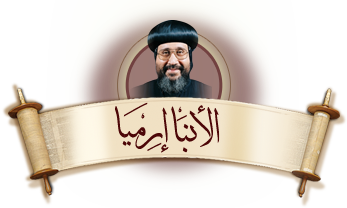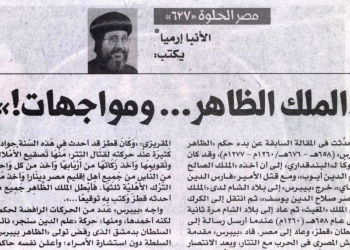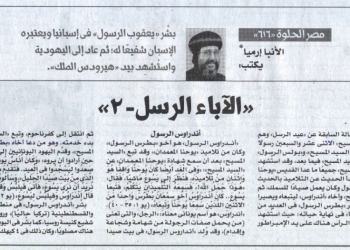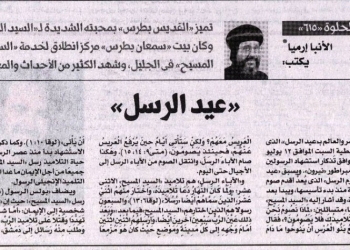In the previous article, we continued our talk about Caliph Al Mu’tadid and Pope Mikhail I who had gone through many troubles and hardships in order to pay money imposed on him by Ibn Tulun. Realizing the danger to which Youhanna and Makarah may be exposed because of their guarantee provided to the ruler, Pope Mikhail went to Tanis city in an attempt to collect some money. On his way, he met a monk dressed in old robes, who addressed the Pope’s disciples: “Tell your master: The Lord will tear off the fine bill in forty days.” Then he disappeared! In no sooner than forty days, Ibn Tulun died, and his son, Khumarwayh succeeded him and exempted the Pope from the rest of the money.
After spending twenty-seven years – or twenty five as reported by some historians – Pope Mikhail I departed during the reign of Khumarawayh.
After his departure, the Coptic Church faced great troubles; being unable to ordain another Patriarch because of the occurrence of great disputes, the Church stayed for fourteen years with no Patriarch, until Anba Bakhom, the Bishop of Taha, interceded to the ruler who had appreciated him, and thus, Pope Ghabrial I was ordained Patriarch on the See of St. Mark the Apostle.
The Body of Saint Mark the Apostle
In the 9th century, some Venetian merchants stole the body of St. Mark the Apostle from Alexandria and took it to Venice; the permanent struggle between the Coptic Church and the Melkites had been intensified, the Melkites managed to seize some Coptic churches, among which is Bokalia Church, which became known later by the church under the ground due to its size reduction! Some of the Venetian merchants who were trading in Alexandria city thought to take the body of St. Mark the Apostle from his church. And thus, they placed him secretly in a ship heading towards their city where he was placed in a large cathedral, while the saint’s head remained buried in Egypt. Historian Abu al-Makarem confirmed this narrative, saying: “When a dispute arose regarding the Orthodox faith in Chalcedon city in 451 AD, the Melkites requested that churches would be divided between them and the Copts; so the Melkites chose the church under the ground, in which the Apostle’s body had been kept, while the Copts chose the Southern church to which the Apostle’s head was transferred.
The Westerners stole this body by placing it in a hollow column of marble, and when they reached Venice with their plunder, they were welcomed by its people with great joy, and they set their modern republic under the protection of the Apostle Leo, for Mark the Evangelist is greatly appreciated in Italy”. Also, historian Ibn Kubar mentioned: “It had remained buried in the Eastern church on the seashore of Alexandria, until some Venetians played a trick, stole the body and left the head, they went to Venice with the body, which is still there so far” About this incident, historian Butler also wrote: “… Beyond the eastern door is St. Mark’s Monastery. Monks live in that church where he had been buried, but the Venetians came into the sea and carried his body to their island.”
The body of Saint Mark remained in Venice until 1968, when Pope Kyrillos VI, the 116th Patriarch of Alexandria, sought to restore the body of St. Mark, the Preacher of the Egyptian homes, on the occasion of nineteen centuries passing after his martyrdom. A cathedral on St. Mark’s name was constructed in Anba Rewis Monastery in Abbassiya.
Thus, the Saint’s body was restored on June 24, 1968, accompanied by an ecclesiastical delegation, and received at Cairo Airport by Pope Kyrillos VI, as well as Mer Ignatius Yacoub III, the Syriac Orthodox Patriarch of Antioch and head of the Syriac Orthodox Church, and a number of Coptic and foreign Archbishops and Bishops, gathered with crowds of Egyptian Muslims and Christians, then the body was laid with great joy in a special shrine below the Great Cathedral of St. Mark.
And… Stories about beautiful Egypt never end
The General Bishop
Head of Coptic Orthodox Cultural Center


 العربية
العربية











